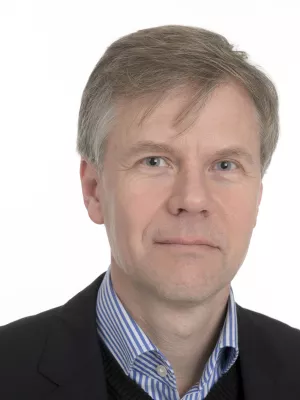
Crister Ceberg
Professor

Rescue Effect Inherited in Colony Formation Assays Affects Radiation Response
Författare
Summary, in English
It is well known that nonirradiated cells can exhibit radiation damage (bystander effect), and recent findings have shown that nonirradiated cells may help protect irradiated cells (rescue effect). These findings call into question the traditional view of radiation response: cells cannot be envisioned as isolated units. Here, we investigated traditional colony formation assays to determine if they also comprise cellular communication affecting the radiation response, using colony formation assays with varying numbers of cells, modulated beam irradiation and media transfer. Our findings showed that surviving fraction gradually increased with increasing number of irradiated cells. Specifically, for DU-145 human prostate cancer cells, surviving fraction increased 1.9-to-4.1-fold after 5-12 Gy irradiation; and for MM576 human melanoma cells, surviving fraction increased 1.9-fold after 5 Gy irradiation. Furthermore, increased surviving fraction was evident after modulated beam irradiation, where irradiated cells could communicate with nonirradiated cells. Media from dense cell culture also increased surviving fraction. The results suggest that traditional colony formation assays comprise unavoidable cellular communication affecting radiation outcome and the shape of the survival curve. We also propose that the increased in-field surviving fraction after modulated beam irradiation is due to the same effect.
Avdelning/ar
- Tumörmikromiljö
- Medicinsk strålningsfysik, Lund
- BioCARE: Biomarkers in Cancer Medicine improving Health Care, Education and Innovation
- Huvud- och halscancergruppen
Publiceringsår
2018-01
Språk
Engelska
Sidor
44-52
Publikation/Tidskrift/Serie
Radiation Research
Volym
189
Issue
1
Dokumenttyp
Artikel i tidskrift
Förlag
Radiation Research Society
Ämne
- Cancer and Oncology
- Radiology, Nuclear Medicine and Medical Imaging
- Other Physics Topics
Nyckelord
- Journal Article
Status
Published
Projekt
- Signaling mediated effects of radiation therapy
Forskningsgrupp
- Head and Neck Cancer Research Group
ISBN/ISSN/Övrigt
- ISSN: 0033-7587

